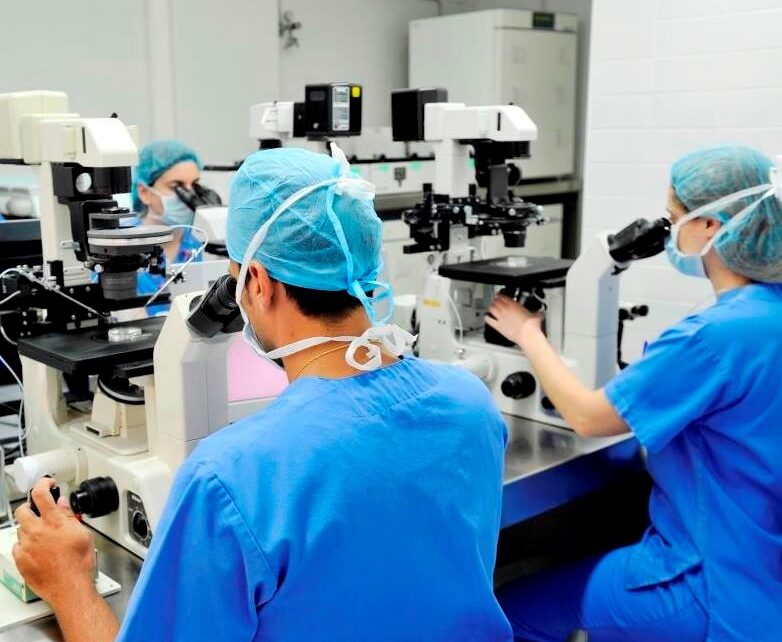
Why does embryonic arrest sometimes happen during in vitro development?
Many factors can intervene in arrest processes during embryo development which mean cell division is detained and, therefore, it is not possible to implant the embryo in the mother’s uterus and bring about a pregnancy.
In the first instance, the conditions for development are essential. Embryos that develop in vitro are subjected to a number of artificial conditions that do not exist in vivo and which will always be less than optimum. Embryos which were apparently viable can suffer embryonic arrest. Huge efforts have been made over the last few years to try and mimic what happens inside the mother and replicate those conditions in laboratory processes. Most of all, the concentration of oxygen in incubators has been reduced, going from 20% down to 5%. The composition of the culture means has also been improved. This, along with exhaustive monitoring of pH and osmotic concentration, means that we can routinely carry out prolonged embryo development up to blastocyst stage in order to achieve improved embryo selection and increase pregnancy rates.
Why is there an embryo blockage?
However, even with improved development conditions, between 10 and 15% of embryos obtained during in vitro fertilisation (IVF) go into permanent arrest of their cell cycle. Approximately 40% of couples that undergo IVF treatment have one case of embryonic arrest per cycle. Without a doubt, the most important factors leading to embryonic arrest and, therefore, an inability to generate a pregnancy, are embryo chromosome abnormalities.
The early stages of human development are very susceptible to errors due to chromosome abnormalities which can occur in different critical stages during meiosis, fertilisation and early embryo division. On the whole, embryos in the early stages of development have high chromosome aneuploidy rates (abnormalities in the number of copies of the chromosomes). It has even been suggested that during the third day of embryo development (the 8 cell stage), 60% of all the embryos obtained through IVF have at least one cell with aneuploidies.
Chromosomal abnormalities
In a study published recently, Maurer and collaborators studied 119 embryos which had suffered arrest in development and observed that 70% of them had chromosome abnormalities. This means that chromosome abnormalities are the most significant cause of embryonic arrest (Maurer and collaborators, 2015).
All of this confirms the idea that chromosomally abnormal embryos face significant pressure. This negative selection would appear to take place mainly during the pre-implantation period, causing arrest in division and/or embryo degeneration.
However, it should be taken into account that development taken up to blastocyst stage is not reliable in terms of making a selection against those embryos which are chromosomally abnormal. According to our own results, using PGS/PGT-A/CCS (Comprehensive Chromosome Screening), between 30 and 50% of the embryos that survive and reach blastocyst stage with normal morphology have chromosomal abnormalities. Therefore, the use of technology of this type in IFV laboratories helps us to select the embryo with the greatest possibility of implanting and leading to a pregnancy.
Dr.Jorge Ten, Director of the Reproduction Biology Unit at Instituto Bernabeu
IT MAY ALSO BE OF INTEREST TO YOU
- In Vitro Fertilization (IVF)
- Embryo transfer
- Pre-implantation genetic diagnosis or testing (PGD/PGT)
- Structural chromosome abnormalities: how do they impact the embryo and the carrier?
- How can I help my IVF treatment to work? 10 pieces of advice that may improve your chances
